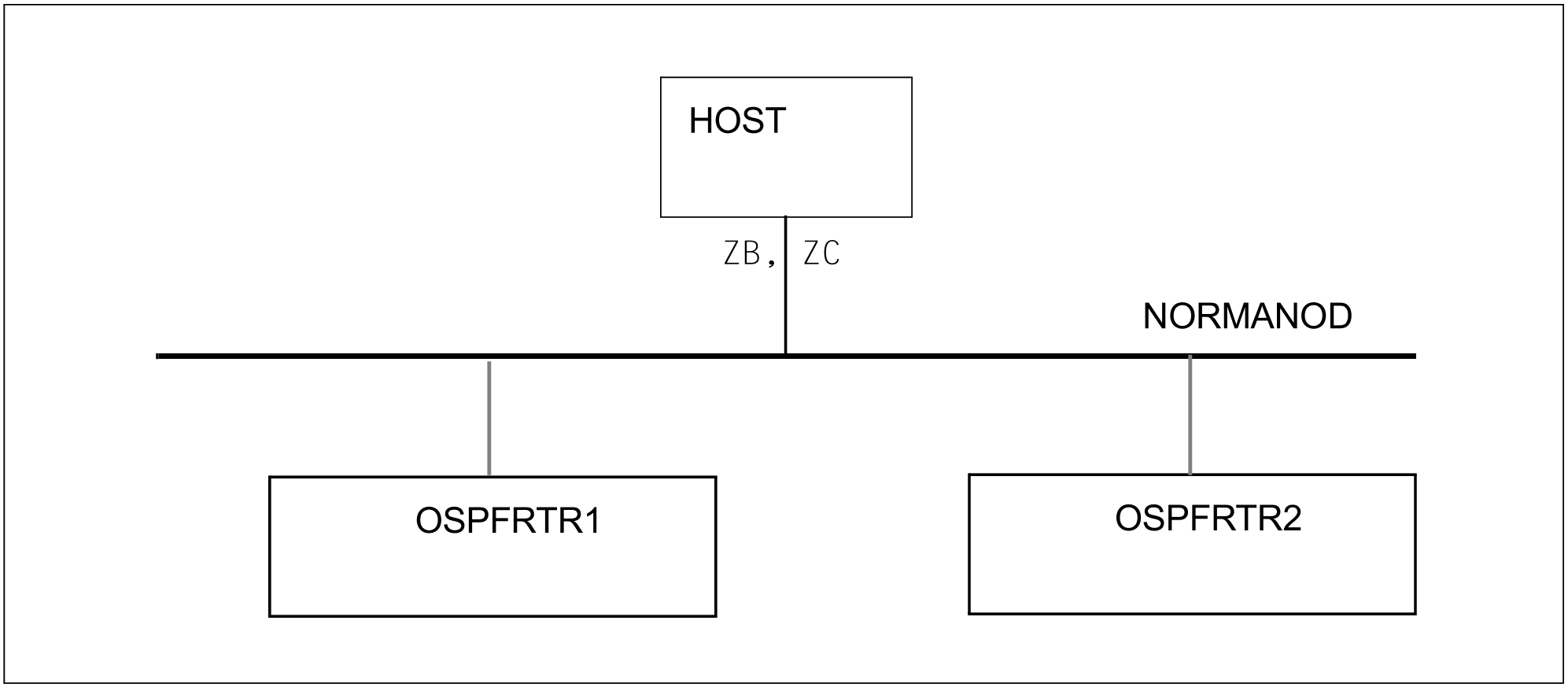BCAM V20.0A permits lines / a VLAN line to be defined initially without any address being specified. The addresses can subsequently be assigned to these lines using the ADD-OWN-ADDRESS command.
The definition of a minimum configuration with one node and one line shows the benefit of this procedure. Two networks,172.25.92.73/25 and 199.19.22.25/24, are to be accessible via this one line. Each network is operated via an OSPF router. The routers are no longer defined explicitly. Automatic end system creation is enabled.
After the following configuration has been activated and after reception of both routers’ “OSPF hellos”, the OSPF routers are each automatically assigned the appropriate local address.
/BCOPTION A-E-C=ON
/CREATE-NODE NODE-NAME=NORMANOD
/CREATE-LINE LINE-NAME=LA#SHNE6, -
/ IP-ADDRESS=172.25.92.73/25, -
/ L2-PROTOCOL=*CSMACD(NODE-NAME=NORMANOD, -
/ WRITE-DEVICE=ZC,READ-DEVICE=ZB)
/ADD-OWN-ADDRESS LINE-NAME=LA#SHNE6, -
/ IP-ADDRESS=199.19.22.25/24
Advantages compared to older BCAM versions
Up to BCAM V19.0A it was only possible to assign another local address to a line indirectly, for example using a CREATE-ROUTE command.
The ADD-OWN-ADDRESS command permits direct assignment.
It is no longer necessary to define the OSPF routers explicitly; they are recognized as default routers for the specified networks. The routers are also assigned to the relevant local address, which is the result of the interplay of OSPF and CIDR support.
Diagnosis
The information about the OSPF routers stored in BCAM can be displayed as follows.
/START-ASTRID
SO
RD
RS SI=QUEUE,QUEUE=OSPF

